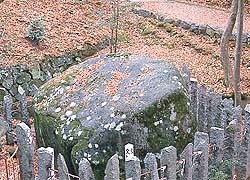河原左大臣

陸奥の
しのぶもぢずり
誰故に
乱れそめにし
我ならなくに
かわらのさだいじん
みちのくの
しのぶもじずり
たれゆえに
みだれそめにし
われならなくに
Kawara no Sadaijin
Like the printed leaves of ferns
On Michinoku cloth,
Who has imposed on me
This affliction, but you.
But I can’t resist it.
Hokusai
Kawara no Sadaijin (822 - 895), also known as Minamoto no Toru, was a poet and statesman. He was Sadaijin, ‘Minister of the Left (of the Riverside)’, and lived in Kawara (‘riverbed’), Kyoto. He was born the grandson of Emperor Saga and a member of the Saga Genji clan. He is sometimes mentioned as the model for Hikaru Genji in the Tale of Genji, though there are more pretenders for that.
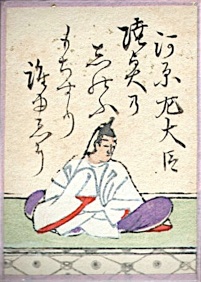

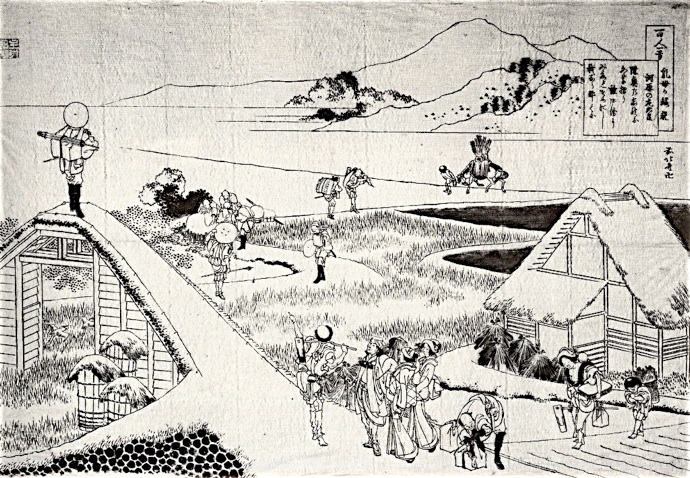
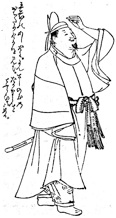
By Kikuchi Yosai
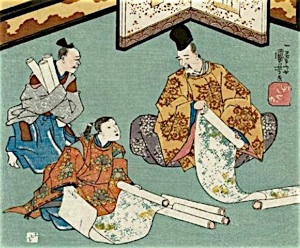
By Kuniyoshi. The poet examining Michinoku prints
Shinobu mojizuri (also called shinobu-zuri; fern cloth-printing or mottling) from Michinoku is an ancient dyeing process in which ferns are pressed and rubbed into cloth creating a tangled pattern. Shinobu is a pivot word here, it also means ‘to hide oneself’, ‘endure’ or ‘to love secretly’, and was the name of a district in Michinoku at that time. Somenishi is both ‘beginning’ and ‘dyeing’.
Basho wrote this in his travel diary: “On the following morning I made my way to the village of Shinobu to look at the stone upon whose chequered face they used to dye a certain type of cloth called shinobu-zuri. I found the stone in the middle of a small village, half buried in the ground. According to the child who acted as a self-appointed guide, this stone was once on the top of a mountain, but the travellers who came to see it did so much harm to the crops that the farmers thought it a nuisance and thrust it down into the valley, where it rests now with its chequered face downward. I thought the story was not altogether unbelievable.”
So we have several possibilities to consider. There is a Shinobu yama in present-day Fukushima, with a Kannon temple at its foot, where we can find a mochizuri-ishi or ‘printpattern stone’. Fukushima City was once called Shinobu-no-sato, the village of Shinobu.
In his drawing Hokusai may have suggested that the road to Michinoku was a long and difficult one.
Mochizuri-ishi of Fukushima
